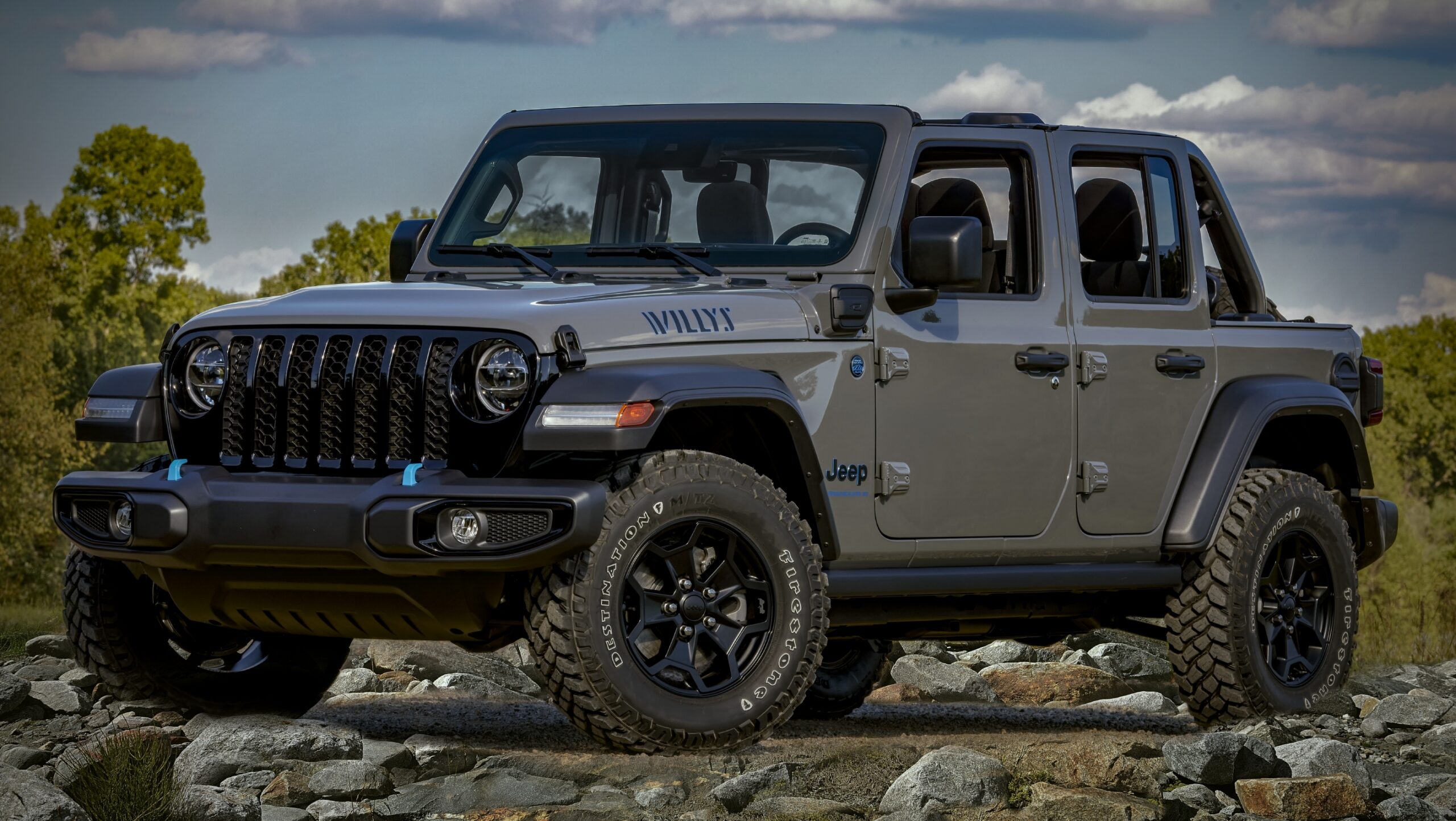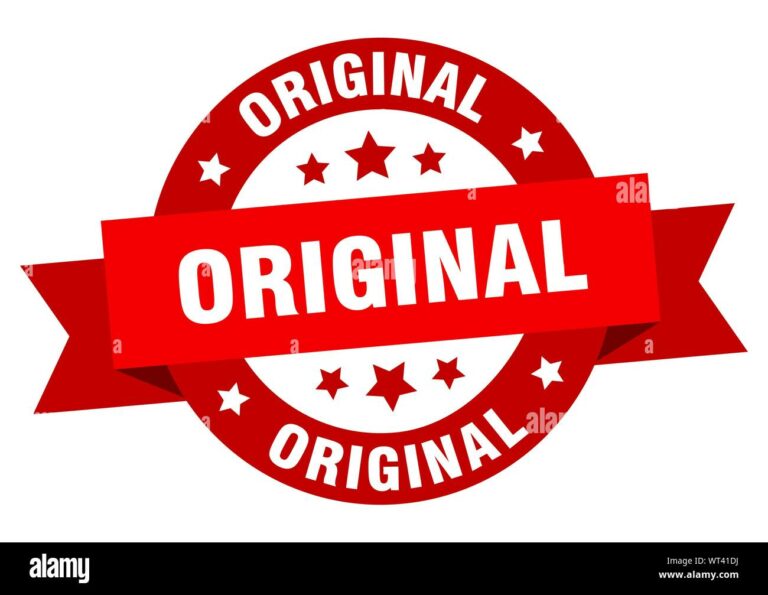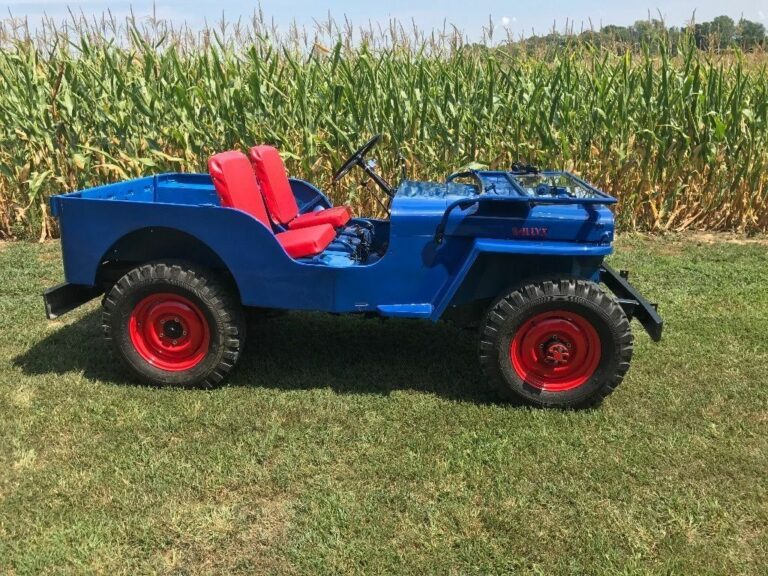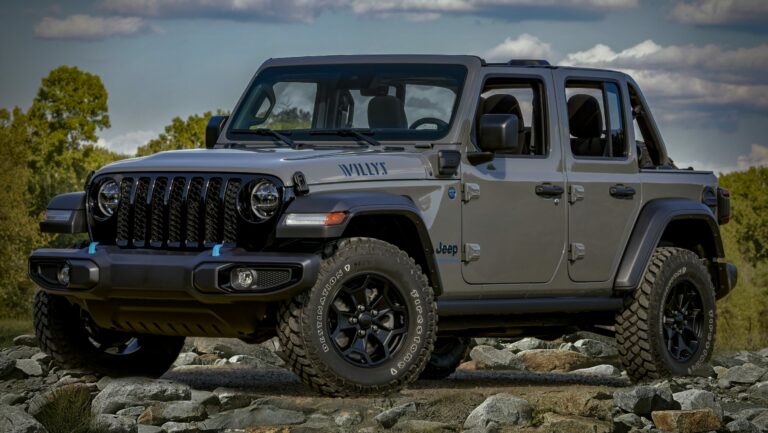Jeep Wrangler 2 Door Safety Ratings: A Comprehensive Guide
Jeep Wrangler 2 Door Safety Ratings: A Comprehensive Guide jeeps.truckstrend.com
The Jeep Wrangler, an icon of adventure and off-road capability, holds a unique place in the automotive world. Its distinctive design, removable roof and doors, and legendary prowess on challenging terrains often lead prospective buyers to wonder about a crucial aspect: its safety ratings. For the two-door variant, specifically, understanding these ratings is paramount, as they provide an objective measure of how the vehicle performs in various crash scenarios and how well its active safety features protect occupants. This comprehensive guide will delve into the intricacies of Jeep Wrangler 2 Door safety ratings, offering insights from leading safety organizations and practical advice for owners and enthusiasts.
Understanding Automotive Safety Ratings: The Benchmarks
Jeep Wrangler 2 Door Safety Ratings: A Comprehensive Guide
Automotive safety ratings are the bedrock of consumer information, designed to help buyers make informed decisions. These ratings are primarily determined by independent organizations that conduct rigorous crash tests and evaluate a vehicle’s safety features. The two most prominent entities providing these evaluations in the United States are the National Highway Traffic Safety Administration (NHTSA) and the Insurance Institute for Highway Safety (IIHS).
NHTSA employs a five-star rating system, assessing frontal crash, side crash, and rollover resistance. A higher star rating indicates better performance in crash protection and rollover prevention. The IIHS, on the other hand, uses a letter-grade system (Good, Acceptable, Marginal, Poor) for various crash tests, including moderate overlap front, small overlap front (driver and passenger sides), side, roof strength, and head restraints & seats. IIHS also evaluates headlight performance and the effectiveness of front crash prevention systems, awarding ratings like "Superior," "Advanced," or "Basic." Understanding the methodologies of both organizations is key to deciphering the full safety profile of the Jeep Wrangler 2 Door.
NHTSA Ratings for the 2-Door Wrangler
The National Highway Traffic Safety Administration’s evaluations provide a crucial baseline for the 2-door Wrangler’s safety. NHTSA conducts tests that simulate real-world crash scenarios, and its star ratings are widely recognized.
For recent generations of the 2-door Jeep Wrangler (specifically the JL generation, introduced in 2018), NHTSA’s ratings generally show:
- Overall Safety Rating: Often not an explicit single star rating for the 2-door Wrangler due to the complexity of combining all test results, especially with rollover.
- Frontal Crash: Typically receives 3 or 4 stars. This test measures the protection offered to the driver and front passenger in a head-on collision.
- Side Crash: Usually scores 5 stars for both driver and rear passenger side impacts. This test simulates a vehicle striking the side of the car.
- Rollover Resistance: This is often an area of particular focus for high-riding SUVs like the Wrangler. The 2-door Wrangler has consistently received a 3-star rating for rollover resistance, with a higher percentage chance of rollover compared to many other vehicles. This is attributed to its high center of gravity, narrow track width, and body-on-frame construction designed for off-road articulation. While improvements have been made over generations, the inherent design characteristics contribute to this specific rating.

It’s important to note that these ratings are for the vehicle as tested by NHTSA. The 2-door Wrangler’s unique design, including removable elements, can present challenges in achieving top scores in all categories compared to more conventional, fully enclosed passenger vehicles.
IIHS Evaluations for the 2-Door Wrangler

The Insurance Institute for Highway Safety (IIHS) provides a more detailed breakdown of crashworthiness and offers insights into the effectiveness of crash avoidance features. IIHS tests are often more stringent than NHTSA’s, particularly with the small overlap front crash test, which simulates a vehicle hitting a tree or pole with only a small portion of its front.
For the 2-door Jeep Wrangler (JL generation), IIHS evaluations have historically shown mixed results:
- Moderate Overlap Front: Typically rated "Good." This test simulates a head-on collision where a significant portion of the front end is involved.
- Small Overlap Front (Driver’s Side): This test has been a challenge for the Wrangler, often receiving a "Marginal" rating. IIHS reports have sometimes noted structural issues, with significant intrusion into the driver’s footwell area, posing a risk of lower leg and foot injuries.
- Small Overlap Front (Passenger’s Side): Similar to the driver’s side, this test has also resulted in "Marginal" ratings.
- Side Impact: Generally rated "Good," indicating strong protection for occupants in side-impact collisions.
- Roof Strength: Often rated "Good," demonstrating adequate protection in rollover scenarios where the roof is crushed.
- Head Restraints & Seats: Typically rated "Good," indicating good whiplash protection in rear-end collisions.
- Headlights: Ratings for headlights have varied, often falling into "Marginal" or "Poor" categories, meaning they may not provide adequate illumination or may cause excessive glare.
- Front Crash Prevention: Depending on the trim and optional packages, the Wrangler can be equipped with systems that rate "Superior" or "Advanced" for vehicle-to-vehicle crash prevention. This assesses the effectiveness of features like Forward Collision Warning and Automatic Emergency Braking.

The IIHS results highlight specific areas where the Wrangler’s design for off-road ruggedness might compromise on-road crash performance, particularly in the challenging small overlap tests.
Active Safety Features and Their Impact on Ratings
Beyond passive safety (how a vehicle protects occupants in a crash), active safety features play a crucial role in preventing accidents altogether. The availability and performance of these technologies significantly influence overall safety and, particularly, IIHS ratings for crash prevention.
Modern 2-door Jeep Wranglers (JL generation onwards) offer a suite of active safety features, often bundled in optional safety groups:
- Forward Collision Warning (FCW): Alerts the driver to a potential frontal collision.
- Automatic Emergency Braking (AEB): Can automatically apply the brakes to mitigate or avoid a collision if the driver doesn’t react in time. This feature is key to achieving "Superior" or "Advanced" IIHS front crash prevention ratings.
- Blind-Spot Monitoring (BSM): Uses sensors to detect vehicles in the driver’s blind spots and provides visual warnings.
- Rear Cross-Path Detection: Alerts the driver to vehicles approaching from the side when backing out of a parking space.
- Adaptive Cruise Control: Maintains a set distance from the vehicle ahead, enhancing safety and reducing driver fatigue.
- ParkSense® Rear Park Assist System: Uses sensors to detect obstacles behind the vehicle during parking maneuvers.
While these features don’t directly influence the structural crashworthiness ratings, they are invaluable for preventing accidents and contributing to a safer driving experience. When evaluating a 2-door Wrangler, checking for these optional safety packages is highly recommended.
The Unique Challenges and Considerations for 2-Door Wrangler Safety
The Jeep Wrangler 2 Door’s iconic design, rooted in its military heritage and off-road capability, inherently presents unique considerations for on-road safety ratings.
- Body-on-Frame Construction: While excellent for off-roading ruggedness, this traditional construction can sometimes perform differently in modern crash tests compared to unibody designs, which distribute crash forces more evenly.
- Removable Doors and Roof: The ability to remove doors and the roof is a core appeal of the Wrangler. However, in side-impact scenarios, the door structure’s integrity is crucial. While the tested vehicles have their doors in place, the design considerations for removable components can influence structural rigidity.
- High Ground Clearance and Center of Gravity: Essential for off-road articulation, the Wrangler’s high stance leads to a higher center of gravity. This is the primary reason for its lower NHTSA rollover resistance rating, as it increases the vehicle’s propensity to tip during aggressive maneuvers or certain crash impacts.
- Off-Road Capabilities vs. On-Road Safety: The Wrangler is engineered for extreme off-road environments, prioritizing durability, articulation, and approach/departure angles. These design choices sometimes come with compromises in on-road dynamics and passive safety performance when compared to vehicles primarily designed for highway cruising.
- Evolution Across Generations: Safety features and structural designs have significantly improved across Wrangler generations (e.g., from TJ to JK to JL). Newer models benefit from advanced high-strength steels and more sophisticated safety technologies, generally offering better protection than their predecessors.
Interpreting Safety Ratings: What Do They Mean for You?
Understanding safety ratings is more than just looking at stars or letters; it’s about context.
- Comparison is Key: Use ratings to compare vehicles within the same class or those with similar design characteristics. Comparing a Wrangler directly to a sedan or a crossover SUV with a much lower center of gravity might not be entirely apples-to-apples.
- Limitations of Tests: Crash tests are standardized simulations. They don’t cover every possible real-world crash scenario. Driver behavior, road conditions, and the specific dynamics of an accident all play significant roles.
- Driver Behavior is Paramount: No matter how many stars a vehicle has, safe driving habits—avoiding distracted driving, maintaining proper speeds, and driving defensively—remain the most critical factors in preventing accidents.
- Focus on Your Priorities: If off-road capability is your absolute priority, you might accept certain compromises in on-road crash ratings. However, if daily commuting is the primary use, considering a Wrangler with optional active safety features becomes even more important.
Improving Your 2-Door Wrangler’s Safety
While the inherent safety ratings are set by the manufacturer and testing agencies, there are actionable steps you can take to enhance your 2-door Wrangler’s safety:
- Regular Maintenance: Ensure tires are properly inflated and in good condition, brakes are functioning optimally, and all lights are working.
- Understand Vehicle Dynamics: Be aware of the Wrangler’s higher center of gravity and its implications for cornering and sudden maneuvers. Avoid abrupt steering inputs at higher speeds.
- Utilize Active Safety Features: If your Wrangler is equipped with FCW, AEB, or BSM, understand how they work and don’t disable them. They are there to assist you.
- Proper Loading: Distribute weight evenly and keep heavy items low in the cargo area to maintain vehicle stability, especially if you’re carrying gear for off-roading.
- Off-Road Safety Gear: For serious off-roading, consider additional safety equipment like winches, recovery gear, and even aftermarket roll cages (ensure professional installation and consider implications for on-road legality and insurance).
- Defensive Driving: Always scan the road ahead, maintain a safe following distance, and be prepared for unexpected situations.
Conclusion
The Jeep Wrangler 2 Door is an undeniably capable and beloved vehicle, celebrated for its adventurous spirit and iconic design. Its safety ratings, as assessed by NHTSA and IIHS, provide a transparent look into its performance in various crash scenarios. While it excels in some areas like side impact protection and roof strength, its design-inherent characteristics, such as a high center of gravity, contribute to lower rollover resistance ratings and specific challenges in advanced crash tests like the IIHS small overlap front.
Modern 2-door Wranglers benefit significantly from available active safety features, which can dramatically reduce the likelihood of a collision. For prospective buyers, it’s crucial to weigh the Wrangler’s unique capabilities against its safety profile, prioritize models with available safety tech packages, and commit to responsible driving practices. Ultimately, understanding these ratings empowers you to make an informed decision, ensuring that your adventure in a Jeep Wrangler 2 Door is as safe as it is thrilling.
Jeep Wrangler 2 Door Safety Ratings Summary Table (Recent Models)
| Feature/Rating Category | NHTSA Rating (Typical) | IIHS Rating (Typical) | Representative MSRP Range (New, Varies by Trim/Year) | Notes |
|---|---|---|---|---|
| Overall Rating | N/A (No single score) | N/A (No single score) | $32,000 – $55,000+ | NHTSA does not provide an "Overall" for vehicles with high rollover risk. IIHS rates individual tests. |
| Frontal Crash | 3-4 Stars | Good (Moderate Overlap) | Included in base price | Driver & Passenger protection in head-on collisions. |
| Side Crash | 5 Stars | Good | Included in base price | Protection in side-impact collisions. |
| Rollover Resistance | 3 Stars | Good (Roof Strength) | Included in base price | Higher center of gravity leads to lower NHTSA rating. IIHS Roof Strength test is different. |
| Small Overlap Front (Driver) | N/A | Marginal | Included in base price | Challenging test for Wrangler, potential for intrusion. |
| Small Overlap Front (Passenger) | N/A | Marginal | Included in base price | Similar performance to driver’s side. |
| Head Restraints & Seats | N/A | Good | Included in base price | Whiplash protection in rear-end collisions. |
| Headlights | N/A | Marginal/Poor | Included in base price (Upgrades may improve) | Illumination quality and glare. Optional LED lights often improve this. |
| Front Crash Prevention (Vehicle-to-Vehicle) | N/A | Superior/Advanced | Often part of optional "Safety Group" (+$995 – $1,295) | Requires optional Forward Collision Warning & Automatic Emergency Braking. |
| Blind-Spot Monitoring | N/A | N/A | Often part of optional "Safety Group" (+$995 – $1,295) | Active safety feature to prevent side collisions. |
| Rear Cross-Path Detection | N/A | N/A | Often part of optional "Safety Group" (+$995 – $1,295) | Active safety feature for backing up. |
Note: Ratings and pricing are typical for recent model years (e.g., JL generation 2018-present) and can vary by specific model year, trim level, and optional equipment. Always consult the official NHTSA and IIHS websites for the most up-to-date and specific ratings for the exact year and trim you are considering.
Frequently Asked Questions (FAQ)
Q1: Is the 2-door Jeep Wrangler considered a safe vehicle?
A1: The 2-door Jeep Wrangler offers a mixed safety profile. It performs well in some crash tests like side impacts and roof strength. However, its design, particularly its high center of gravity, results in a lower NHTSA rollover resistance rating, and it has historically struggled with the IIHS small overlap front crash test. Modern Wranglers offer advanced active safety features that can significantly help prevent accidents.
Q2: Why are the Wrangler’s rollover ratings sometimes lower than other SUVs?
A2: The Wrangler’s design prioritizes off-road capability, which includes high ground clearance and a narrow track width, leading to a higher center of gravity. This inherent design characteristic makes it more susceptible to rollover in certain high-speed maneuvers or impacts compared to lower-slung vehicles or wider SUVs.
Q3: Are the removable doors and roof a safety concern?
A3: NHTSA and IIHS conduct crash tests with the doors and roof properly installed, so the ratings reflect performance in that configuration. While the removable nature doesn’t directly reduce the tested crashworthiness, it’s crucial to always drive with the doors and roof secured if you want to benefit from the vehicle’s full crash protection capabilities. Driving without doors or roof is intended for off-road use only, and comes with increased risks.
Q4: Do older 2-door Wranglers have worse safety ratings than newer ones?
A4: Generally, yes. Automotive safety technology and crashworthiness standards have significantly advanced over the years. Newer generations of the Wrangler (especially the JL generation, 2018 onwards) incorporate more high-strength steel, improved structural designs, and offer advanced active safety features that were not available in older models. Therefore, newer Wranglers typically offer better overall protection.
Q5: Can I improve my 2-door Wrangler’s safety?
A5: While you can’t change the official crash ratings, you can significantly enhance your safety by:
- Driving Responsibly: Avoid aggressive maneuvers, especially at high speeds, and be mindful of the vehicle’s higher center of gravity.
- Utilizing Active Safety Features: If equipped, ensure features like Forward Collision Warning and Blind-Spot Monitoring are active.
- Regular Maintenance: Keep tires properly inflated, brakes in good condition, and all vehicle systems well-maintained.
- Proper Loading: Distribute weight evenly and keep heavy items low in the cargo area.
Q6: What’s the difference between NHTSA and IIHS ratings?
A6: Both organizations test vehicle safety, but they have different methodologies and focuses:
- NHTSA (National Highway Traffic Safety Administration): Uses a 5-star rating system, focusing on frontal, side, and rollover crash tests. It’s a government agency.
- IIHS (Insurance Institute for Highway Safety): Uses "Good," "Acceptable," "Marginal," and "Poor" ratings across a wider range of tests, including more severe small overlap frontal crashes, roof strength, head restraints, headlights, and evaluates crash prevention systems. It’s an independent, non-profit organization funded by auto insurers.





